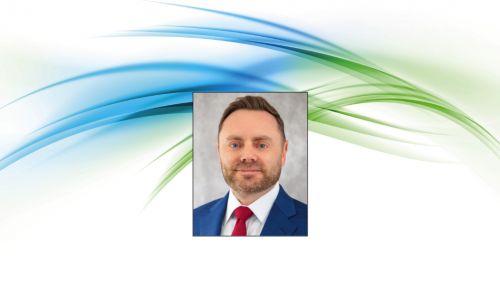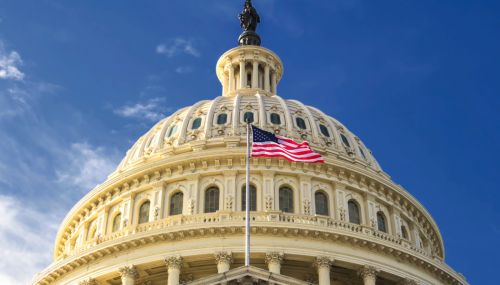All
Canada’s Plan to Phase Out Oil-Fired Furnaces
by Ed Burke and Kelly Burke, Dennis K. Burke Inc.

Our neighbors to the north are fighting the same battles
The Canadian government released a new strategy to accelerate retrofits and green building practices. Heat pumps will play a major role in the government’s strategy.
The federal government says it has a plan to start phasing out the use of oil-fired furnaces in new construction and get homeowners and businesses to switch to heat pumps over the next several years.
The finalized Canadian Green Building Strategy outlines their priorities for decarbonizing buildings, which are Canada’s third-largest source of carbon emissions. Notably absent, though, from the strategy’s targeting are natural gas and propane heating sources.
More than a million homes in Canada are heated with oil, most of them in Quebec, Ontario, Nova Scotia, and British Columbia. Both Quebec and Nova Scotia have committed to banning the installation of oil furnaces.
While the document doesn’t explain in any detail how to phase out oil-fired furnaces, Energy Minister Jonathan Wilkinson said the federal government intends to use regulations and investments to encourage the switch to heat pumps.
“We will be moving to ban the use of heating oil in new construction. And that simply reflects the fact that there are lots of alternatives to heating oil,” Wilkinson said.
The Canada Green Buildings Strategy commits the government to introducing a “regulatory framework that will allow the phase-out of the installation of oil heating systems in new construction, as early as 2028.”
The strategy suggests that heat pumps are more energy efficient than oil furnaces and don’t release harmful emissions. The buildings strategy document says some heat pumps can warm a house even when temperatures fall below -22 degrees and cool it when temperatures exceed 104
degrees. Heat pumps are often coupled with back-up heating sources for prolonged periods of severe cold.
To reach their emissions goals, Canada hopes to create a green retrofitting boom for houses and workplaces. The problem is that heat pumps come with hefty upfront costs. The average cost of a heat pump in Canada is about $18,400, while the average price of an oil furnace with a tank replacement is about $6,500, according to Efficiency Canada.
Wilkinson has said that affordability programs with grants and low interest loans that the federal and provincial governments are co-delivering can lower the cost of heat pumps. Through the Oil to Heat Pump Affordability program, homeowners can receive up to $15,000 to install a heat pump.
While the strategy offers few specifics on how the phase-out would work, it says it would include “necessary exclusions” for places with insufficient access to electricity or where backup standby heating is required.
To hit Canada’s greenhouse gas emissions reduction targets, the country will need to see sustained reductions of as much as 45 percent below 2005 levels by 2030.
The federal government has vowed to slash emissions in the buildings sector by 37 percent below 2005 levels and then achieve net-zero in the sector by 2050.
Most building emissions come from air conditioners, furnaces and boilers. Switching from fossil fuels to electric heat pumps could significantly reduce buildings’ carbon footprints.
The strategy singles out the need to retrofit existing structures to make them more energy efficient with a focus on the residential buildings.
“There are 16 million residential buildings, most of which will be standing in 2050,” Wilkinson said, “most all of which will require deep retrofits.”
Ottawa is giving Atlantic Canadians more time to switch to heat pumps. The federal government announced it would pause the carbon tax on heating oil for three years.
The document also says homebuilders need to construct more “green and affordable homes from the start” and warns that the use of materials manufactured through processes that emit a lot of carbon (such as cement and steel) could undo much of the sector’s progress in reducing its emissions.
“For residential buildings, Canada will need at least 3.5 million new homes by 2030,” the strategy document said. “However, if built with current practices, using materials containing a significant amount of ‘embodied carbon,’ with minimum building codes and standards, these structures will add GHGs to our carbon footprint annually.”
The Canadian government doesn’t really have many options to change the way homes are built. The strategy carefully points out that while Ottawa can set standards for federal construction, it’s up to provincial and territorial governments to adopt and implement them.
The Canadian Gas Association cautioned against calls to phase out fossil fuel heating outright, citing the reliability of heat pumps and the cost of switching to them.
Environmental groups are criticizing the government for targeting heating oil while stopping short of phasing out other forms of fossil fuel home heating. “By neglecting to develop a policy to address natural gas in new buildings, the plan ignores the elephant in the room,” climate advocates noted.
The document says that since 2016, the federal government has invested more than $20 billion in green building projects.
Ed and Kelly Burke are respectively Chairman of the Board and Senior Marketing Manager at fuel distributor Dennis K. Burke Inc. They can be reached at 617-884-7800 or ed.burke@burkeoil.com and kelly.burke@burkeoil.com.
Related Posts
 Jim Collura’s First Year as NEFI President and CEO
Jim Collura’s First Year as NEFI President and CEO
Posted on December 22, 2025
 NEFI-Backed National Energy Choice Legislation Advances
NEFI-Backed National Energy Choice Legislation Advances
Posted on December 22, 2025
 How Massachusetts’ Clean Heat Standard Could Transform Energy Dealer Economics
How Massachusetts’ Clean Heat Standard Could Transform Energy Dealer Economics
Posted on December 18, 2025
 Spotlight Sessions Illuminate Opportunities and Challenges
Spotlight Sessions Illuminate Opportunities and Challenges
Posted on September 19, 2025
Enter your email to receive important news and article updates.
